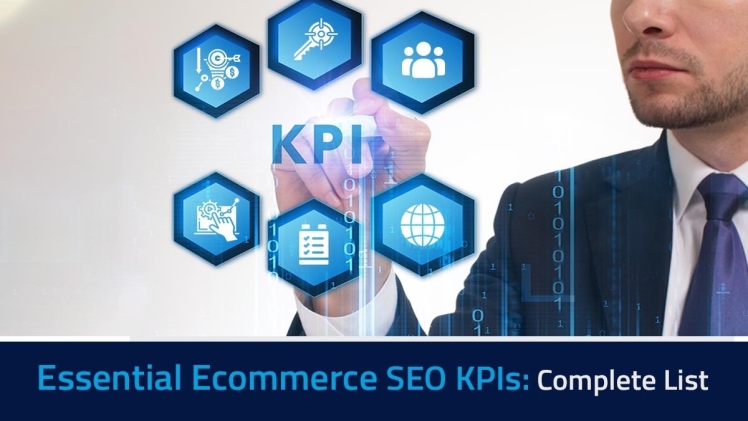With the rising competition in the market and people’s propensity to shop online, many businesses are looking to build eCommerce websites. If you are one of them who has invested in eCommerce website development, you may not want to stop at that. The digital world allows any business to explore its potential to the fullest. For instance, you can optimize your e-store for the search engine so as to improve its rank, enhance visibility, earn credibility, and drive more traffic to the store.
Now, if you invest in SEO services, you sure want to measure your efforts. Keeping a track of your investment and efforts is important as it will help you to stay on the right path and optimize your strategies from time to time. Today, we will explore the essential eCommerce SEO KPIs.
visit here to know more information : Tamilmv
Crucial Ecommerce SEO KPIs
Before starting, let’s quickly tell you that Google Analytics is a go-to tool for tracking SEO efforts in your e-store. However, there are various other free or paid tools available in the market.
1. Assisted Conversion
It may not be possible to get the entire picture of the conversions that a source of traffic offers. That’s because multiple visits and multiple touchpoints may work behind a single conversion.
However, you can find assisted conversions through the following navigation in Google Analytics:
Conversions > Multi-Channel Funnels > Assisted Conversions
It will help you to the efficacy of SEO efforts in driving conversion.
2. Conversion Rate
A high conversion rate is an indicator of on-page SEO success. From a better checkout flow to a relatable copy and an enhanced on-page user experience – a high conversion rate gives you a moment of relief.
You can also pay attention to the conversions driven by organic SEO and other marketing efforts. It will help you to optimize all of your marketing efforts.
3. Non-Branded Keywords
SEO and keywords are synonymous. Now, it is important to track branded and non-branded keywords. In an eCommerce website, it is all the more important because a product can rank through two types of keywords – its brand and the issue that it solves / its nature.
For example, a shoe may leverage two types of keywords – “running shoes for women” and “Nike shoes”. While tracking, you can find out which keywords your products are ranking for and improve each of them.
You can use a keyword tracking tool or Google Analytics’ Search Console integration feature to measure this KPI.
4. Click-Through Rate
Track Click-Through Rate (CTR) as it is an integral part of your SEO efforts. An increased CTR means more sales.
If you don’t yet see a high CTR, may be it’s time to focus on your meta data optimization and the entire branding efforts. Even off-page SEO impacts the click-through rate.
5. Customer Lifetime Value
In Google Analytics, lifetime value is channel-wise segmented. Therefore, you can easily point out the value of the organic search traffic over a certain period of time.
According to the experts of digital marketing services, it costs less to keep existing customers than to acquire new customers. Therefore, increasing the value of the existing audience base is an ideal way to drive growth. And with a metric like a Customer Lifetime Value (CLV), you can gain a deeper insight into it.
6. Position of the Targeted Keywords
You saw this coming. This is perhaps the most straightforward one on the list and indeed a crucial one. You should regularly check the keywords you are ranking for and trace their position. It will help you to get an insight into how your competitors are doing.
7. New User vs Returning User
Google Analytics has a lot to offer. For instance, you can explore how many users are coming from your SEO efforts. Compare them against the returning customers. Instead of looking at the overall customer base, segmenting them will encourage you to put more efforts into driving more new customers. However, don’t forget to pay attention to retaining the existing customers.
Visit here : movierulz
8. Free Listing Orders
If you use Google Merchant Centre, you may want to track a few extra KPIs than the ones we already discussed. Through Google Merchant Centre, you can promote your products organically. Track how many orders you have received through this after optimizing product listing.
9. Core Web Vitals
Core Web Vitals measures the on-page experience that Google holds to be a ranking factor these days. You can track Core Web Vitals in the search console. Look especially for the following aspects:
Cumulative Layout Shift (CLS) – It measures visual stability. Try to maintain a CLS of 0.1 or less on your page to ensure a great user experience.
Largest Contentful Paint (LCP) – It measures loading performance. Ideally, LCP should occur within 2.5 seconds when the page loads for the first time to provide a positive UX.
First Input Delay (FID) – It denotes interactivity. The web pages should ideally have an FID of 100 milliseconds or less.
Constantly measuring and optimizing eCommerce SEO effort will help you to make the most of your investment. We hope that the blog has helped you to get started.

